-
 Bitcoin
Bitcoin $82,707.6104
8.19% -
 Ethereum
Ethereum $1,663.8653
12.89% -
 Tether USDt
Tether USDt $0.9998
0.07% -
 XRP
XRP $2.0538
14.26% -
 BNB
BNB $582.7272
5.28% -
 Solana
Solana $118.9611
12.98% -
 USDC
USDC $1.0000
0.00% -
 Dogecoin
Dogecoin $0.1612
13.35% -
 TRON
TRON $0.2383
3.45% -
 Cardano
Cardano $0.6344
13.56% -
 UNUS SED LEO
UNUS SED LEO $9.3865
4.45% -
 Chainlink
Chainlink $12.6650
16.07% -
 Toncoin
Toncoin $3.1639
5.68% -
 Avalanche
Avalanche $18.4470
14.41% -
 Stellar
Stellar $0.2420
9.28% -
 Sui
Sui $2.2319
15.22% -
 Hedera
Hedera $0.1687
14.85% -
 Shiba Inu
Shiba Inu $0.0...01195
12.19% -
 MANTRA
MANTRA $6.8363
10.16% -
 Bitcoin Cash
Bitcoin Cash $304.1219
12.87% -
 Litecoin
Litecoin $75.9734
9.76% -
 Polkadot
Polkadot $3.6346
7.62% -
 Dai
Dai $1.0001
0.01% -
 Bitget Token
Bitget Token $4.2769
6.44% -
 Ethena USDe
Ethena USDe $0.9990
0.03% -
 Hyperliquid
Hyperliquid $13.6469
21.93% -
 Pi
Pi $0.6082
7.67% -
 Monero
Monero $203.2112
4.00% -
 Uniswap
Uniswap $5.4034
13.28% -
 OKB
OKB $54.0729
6.18%
What is CEX (centralized exchange) and its risks?
CEXs like Binance and Coinbase offer user-friendly trading with high liquidity, but users face risks like hacking and regulatory changes, necessitating strong security measures.
Apr 07, 2025 at 02:28 pm
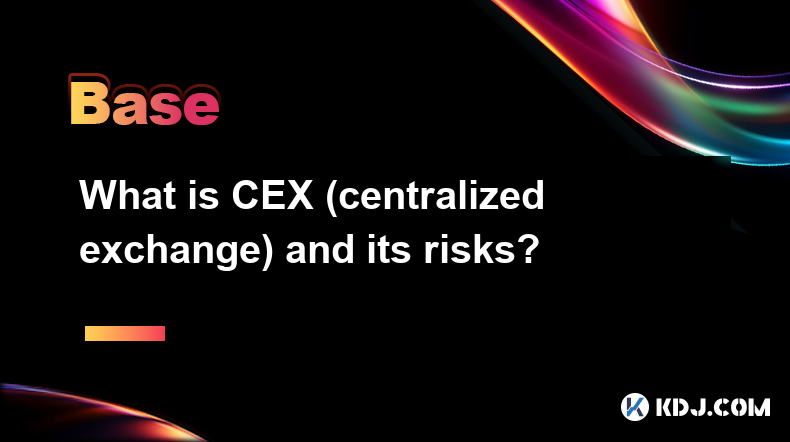
A Centralized Exchange (CEX) is a platform where users can trade cryptocurrencies for other assets, including other cryptocurrencies, fiat money, or derivatives. These exchanges are operated by a central authority or company that manages the platform, holds users' funds, and facilitates transactions. Some of the most well-known CEXs include Binance, Coinbase, and Kraken.
How CEXs Work
CEXs function similarly to traditional stock exchanges but are specifically designed for trading digital assets. When users want to trade on a CEX, they must first create an account and deposit their funds into the exchange's wallet. Once the funds are deposited, users can place buy or sell orders, which are then matched with other orders on the exchange's order book. The exchange charges a fee for each transaction, which is typically a percentage of the trade volume.
Benefits of Using CEXs
CEXs offer several advantages that make them popular among cryptocurrency traders. Firstly, they provide a user-friendly interface that is easy to navigate, even for beginners. Secondly, CEXs often have high liquidity, meaning that users can quickly buy or sell large amounts of cryptocurrencies without significantly affecting the market price. Thirdly, many CEXs offer a wide range of trading pairs, allowing users to trade between different cryptocurrencies and fiat currencies. Lastly, CEXs typically provide customer support and security measures, such as two-factor authentication (2FA), to protect users' accounts.
Risks Associated with CEXs
Despite their benefits, CEXs come with several risks that users should be aware of. One major risk is the potential for hacking and theft. Since CEXs hold large amounts of users' funds in their wallets, they are attractive targets for hackers. Several high-profile hacks have occurred in the past, resulting in the loss of millions of dollars worth of cryptocurrencies. Another risk is the possibility of regulatory action. Governments around the world are increasingly scrutinizing cryptocurrency exchanges, and regulatory changes could impact the operations of CEXs. Additionally, there is the risk of exchange insolvency. If a CEX goes bankrupt, users may lose access to their funds, as seen in the case of the Mt. Gox exchange in 2014.
Security Measures on CEXs
To mitigate the risks associated with CEXs, many exchanges implement various security measures. One common measure is the use of cold storage, where the majority of users' funds are kept offline and are therefore less vulnerable to hacking. Another measure is the implementation of multi-signature wallets, which require multiple private keys to authorize a transaction, adding an extra layer of security. Additionally, many CEXs offer insurance to cover potential losses due to hacking or theft. Users can also take steps to protect their accounts, such as enabling 2FA and using strong, unique passwords.
How to Choose a CEX
When selecting a CEX, there are several factors to consider. Firstly, users should research the exchange's reputation and track record. Reading reviews and checking for any past security breaches can provide valuable insights. Secondly, users should consider the fees charged by the exchange, as these can vary significantly between different platforms. Thirdly, the range of trading pairs and liquidity should be evaluated, as these can impact the ease and cost of trading. Lastly, users should assess the security measures in place and the level of customer support offered by the exchange.
Steps to Start Trading on a CEX
To start trading on a CEX, users need to follow a series of steps:
- Create an account: Visit the CEX's website and sign up for an account. This typically involves providing an email address and creating a password.
- Verify your identity: Many CEXs require users to complete a Know Your Customer (KYC) process, which involves submitting identification documents to verify their identity.
- Deposit funds: Once the account is set up and verified, users can deposit funds into their exchange wallet. This can be done by transferring cryptocurrencies from a personal wallet or by depositing fiat currency through a bank transfer or other payment method.
- Place a trade: With funds in the exchange wallet, users can place buy or sell orders. This can be done through the exchange's trading interface, where users can specify the amount and price of the cryptocurrency they want to trade.
- Withdraw funds: After completing a trade, users can withdraw their funds from the exchange wallet to their personal wallet or bank account.
Frequently Asked Questions
Q: Can I use a CEX without completing KYC?
A: Some CEXs allow users to trade without completing KYC, but these platforms often have limitations, such as lower withdrawal limits and restricted access to certain features. Most reputable CEXs require KYC to comply with regulatory requirements and to enhance security.
Q: How do CEXs make money?
A: CEXs generate revenue through various means, including transaction fees, withdrawal fees, and listing fees for new cryptocurrencies. Some CEXs also offer additional services, such as staking or lending, which can provide additional income streams.
Q: Are there any alternatives to CEXs?
A: Yes, alternatives to CEXs include Decentralized Exchanges (DEXs), which operate without a central authority and allow users to trade directly with each other. DEXs offer greater privacy and control over funds but may have lower liquidity and a more complex user interface.
Q: How can I protect my funds on a CEX?
A: To protect your funds on a CEX, you should enable two-factor authentication (2FA), use strong and unique passwords, and only keep the amount of cryptocurrency necessary for trading on the exchange. It's also advisable to regularly withdraw your funds to a secure personal wallet.
Disclaimer:info@kdj.com
The information provided is not trading advice. kdj.com does not assume any responsibility for any investments made based on the information provided in this article. Cryptocurrencies are highly volatile and it is highly recommended that you invest with caution after thorough research!
If you believe that the content used on this website infringes your copyright, please contact us immediately (info@kdj.com) and we will delete it promptly.
- Pepe (PEPE) Trader Converts $3k Investment into $73m Profit Despite Market Depression
- 2025-04-10 08:15:13
- PepeX, Widely Discussed as Japan's Potential Response to the Challenges Seen in Recent Fair Launch Platforms
- 2025-04-10 08:15:13
- Ready to Make Your Crypto Portfolio Pop? Here Are the Hottest Meme Coins to Watch
- 2025-04-10 08:10:13
- Shiba Inu (SHIB) Price Prediction: Inverse Head and Shoulders Pattern Points to 20% Rally
- 2025-04-10 08:10:13
- Can a Baby Hippo Meme Coin and a Wild Ethereum Token Outshine One of the Hottest Presales of 2025?
- 2025-04-10 08:05:13
- Google introduced Gemini 2.5, its latest experimental artificial intelligence model
- 2025-04-10 08:05:13
Related knowledge
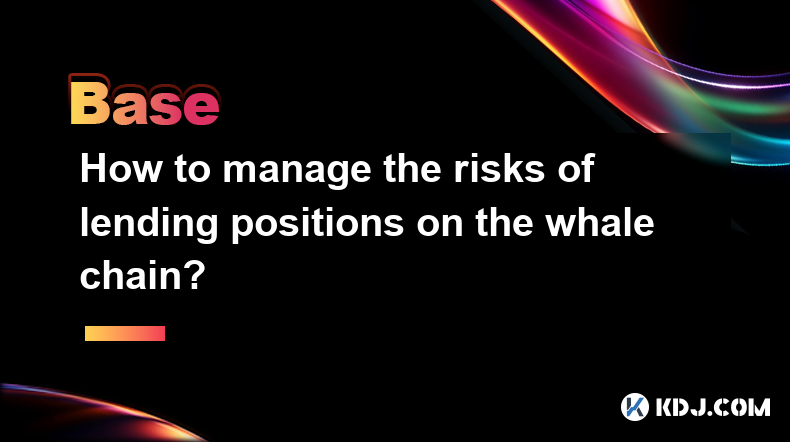
How to manage the risks of lending positions on the whale chain?
Apr 09,2025 at 10:50pm
To manage the risks of lending positions on the whale chain, we need to start from the following aspects: 1. Reasonable control of positions and leverage:Determine the appropriate lending scale and leverage multiple based on your own risk tolerance to avoid excessive leverage. For example, if whales do not have a particularly strong grasp of the market ...
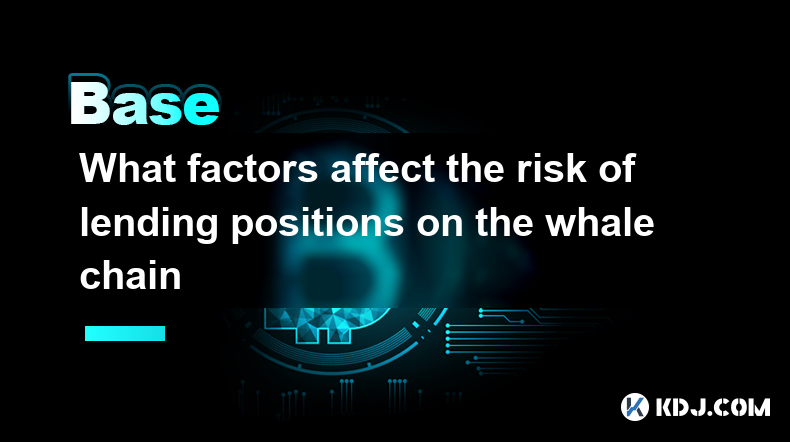
What factors affect the risk of lending positions on the whale chain
Apr 10,2025 at 12:35am
Here are some factors that will affect the risk of lending positions on the whale chain: 1. Market price fluctuations:The decline in collateral prices will cause the collateral value to shrink and may trigger liquidation. For example, a whale borrowed 75.69 million DAI with 60,810 ETH. When the price of ETH falls, its position health will drop sharply a...
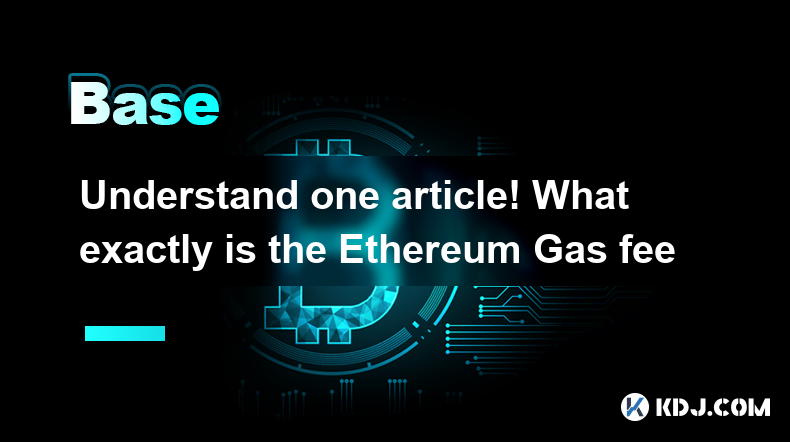
Understand one article! What exactly is the Ethereum Gas fee
Apr 10,2025 at 03:21am
The Ethereum Gas fee refers to the fees paid when trading or executing smart contracts on the Ethereum blockchain, which is used to compensate miners for the computing resources consumed by verifying and packaging exchanges. Here is a detailed introduction to it: Gas concept Gas can be regarded as the “fuel” in the Ethereum network. Ethereum is regarded...
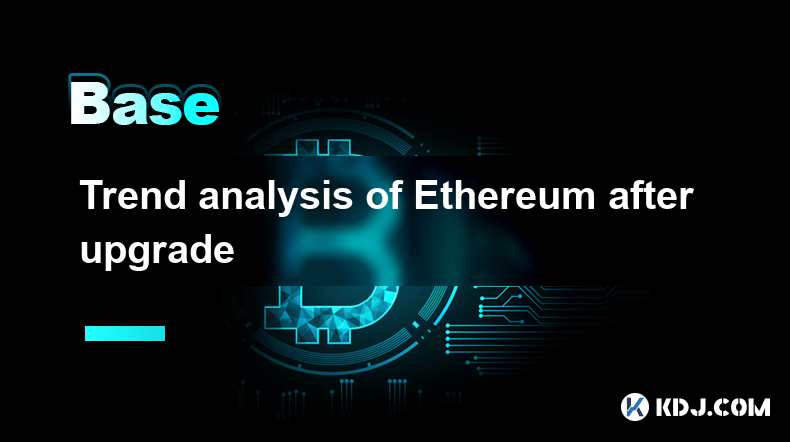
Trend analysis of Ethereum after upgrade
Apr 10,2025 at 04:01am
As a pioneer in blockchain technology, Ethereum has a profound impact on the entire digital asset field every upgrade. Accurately predicting upgraded market trends is crucial for investors and developers. This article will explore in-depth various trends that may appear after the upgrade of Ethereum, helping you grasp the pulse of the market and underst...
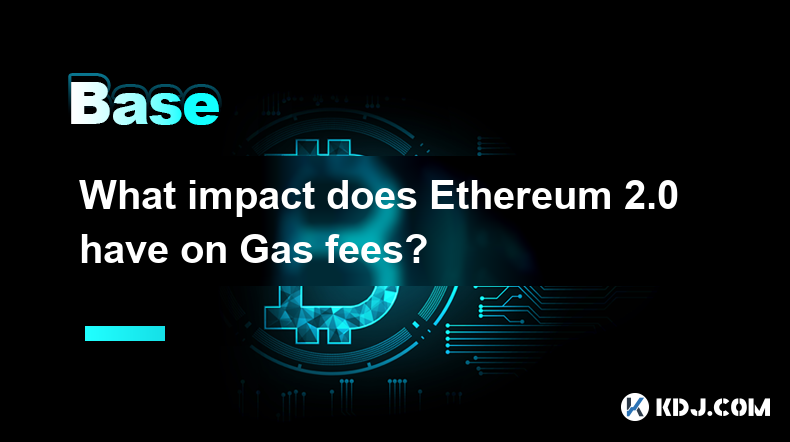
What impact does Ethereum 2.0 have on Gas fees
Apr 09,2025 at 02:43pm
Ethereum 2.0 has had a positive impact on Gas fees in many aspects, mainly reflected in the following aspects: Transformation of consensus mechanism : Ethereum 2.0 shifts from Proof of Work (PoW) to Proof of Stake (PoS). In PoW mode, miners consume a lot of resources in order to obtain block yield rights, so they offset the cost through high handling fe...
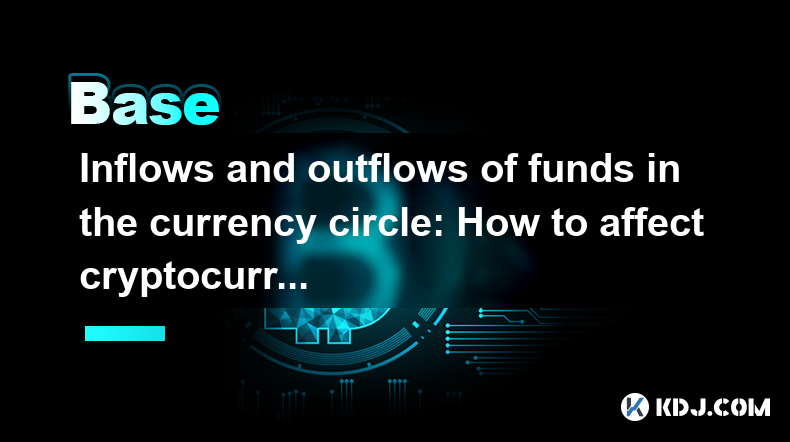
Inflows and outflows of funds in the currency circle: How to affect cryptocurrency price fluctuations?
Apr 09,2025 at 06:28pm
The flow of funds in the currency circle has had a significant impact on cryptocurrency price fluctuations. It is crucial for investors and traders to grasp the dynamics of these capital flows because they directly affect the supply and demand balance of the market, resulting in price increases or falls. This article will explore in-depth how inflows an...

How to manage the risks of lending positions on the whale chain?
Apr 09,2025 at 10:50pm
To manage the risks of lending positions on the whale chain, we need to start from the following aspects: 1. Reasonable control of positions and leverage:Determine the appropriate lending scale and leverage multiple based on your own risk tolerance to avoid excessive leverage. For example, if whales do not have a particularly strong grasp of the market ...

What factors affect the risk of lending positions on the whale chain
Apr 10,2025 at 12:35am
Here are some factors that will affect the risk of lending positions on the whale chain: 1. Market price fluctuations:The decline in collateral prices will cause the collateral value to shrink and may trigger liquidation. For example, a whale borrowed 75.69 million DAI with 60,810 ETH. When the price of ETH falls, its position health will drop sharply a...

Understand one article! What exactly is the Ethereum Gas fee
Apr 10,2025 at 03:21am
The Ethereum Gas fee refers to the fees paid when trading or executing smart contracts on the Ethereum blockchain, which is used to compensate miners for the computing resources consumed by verifying and packaging exchanges. Here is a detailed introduction to it: Gas concept Gas can be regarded as the “fuel” in the Ethereum network. Ethereum is regarded...

Trend analysis of Ethereum after upgrade
Apr 10,2025 at 04:01am
As a pioneer in blockchain technology, Ethereum has a profound impact on the entire digital asset field every upgrade. Accurately predicting upgraded market trends is crucial for investors and developers. This article will explore in-depth various trends that may appear after the upgrade of Ethereum, helping you grasp the pulse of the market and underst...

What impact does Ethereum 2.0 have on Gas fees
Apr 09,2025 at 02:43pm
Ethereum 2.0 has had a positive impact on Gas fees in many aspects, mainly reflected in the following aspects: Transformation of consensus mechanism : Ethereum 2.0 shifts from Proof of Work (PoW) to Proof of Stake (PoS). In PoW mode, miners consume a lot of resources in order to obtain block yield rights, so they offset the cost through high handling fe...

Inflows and outflows of funds in the currency circle: How to affect cryptocurrency price fluctuations?
Apr 09,2025 at 06:28pm
The flow of funds in the currency circle has had a significant impact on cryptocurrency price fluctuations. It is crucial for investors and traders to grasp the dynamics of these capital flows because they directly affect the supply and demand balance of the market, resulting in price increases or falls. This article will explore in-depth how inflows an...
See all articles





















































































